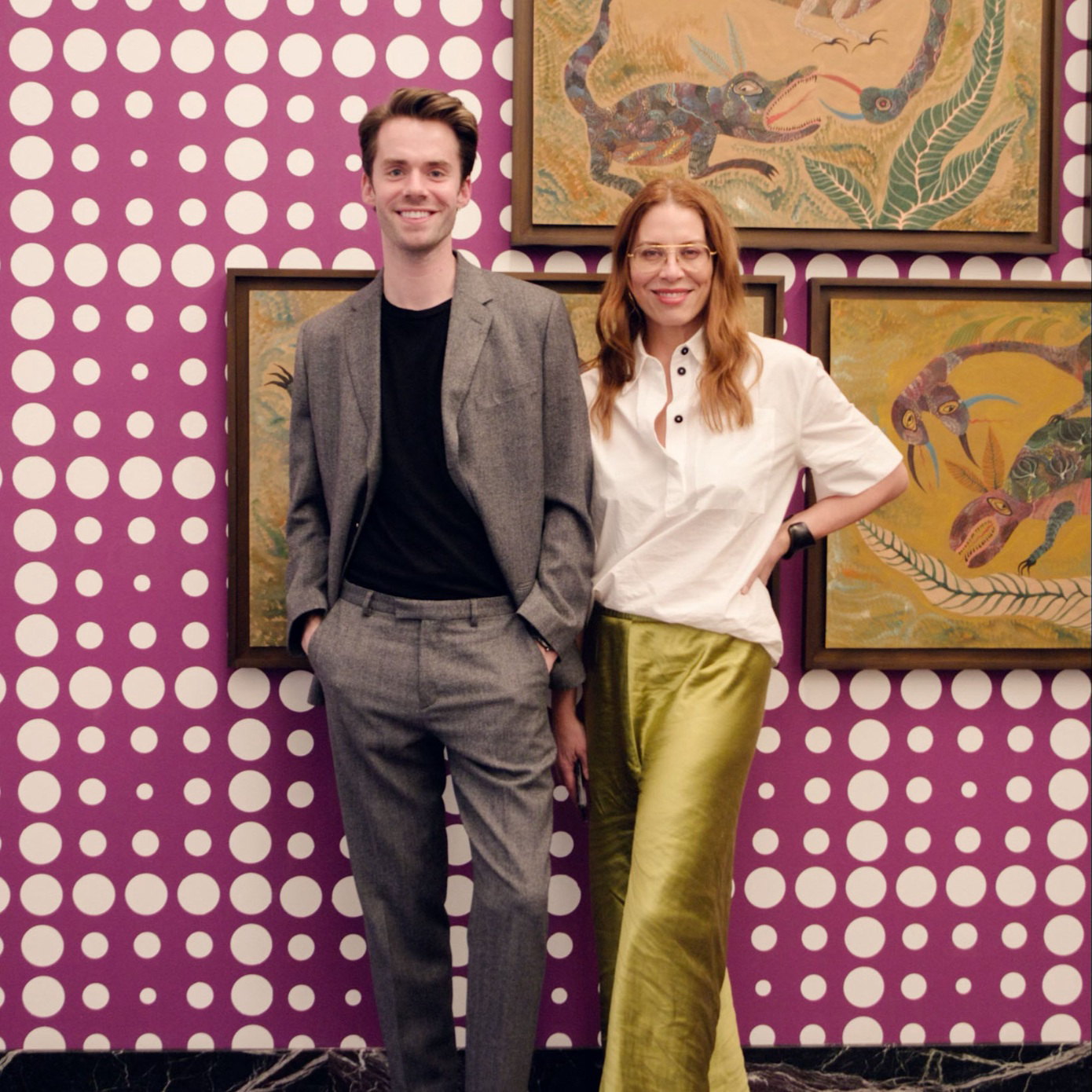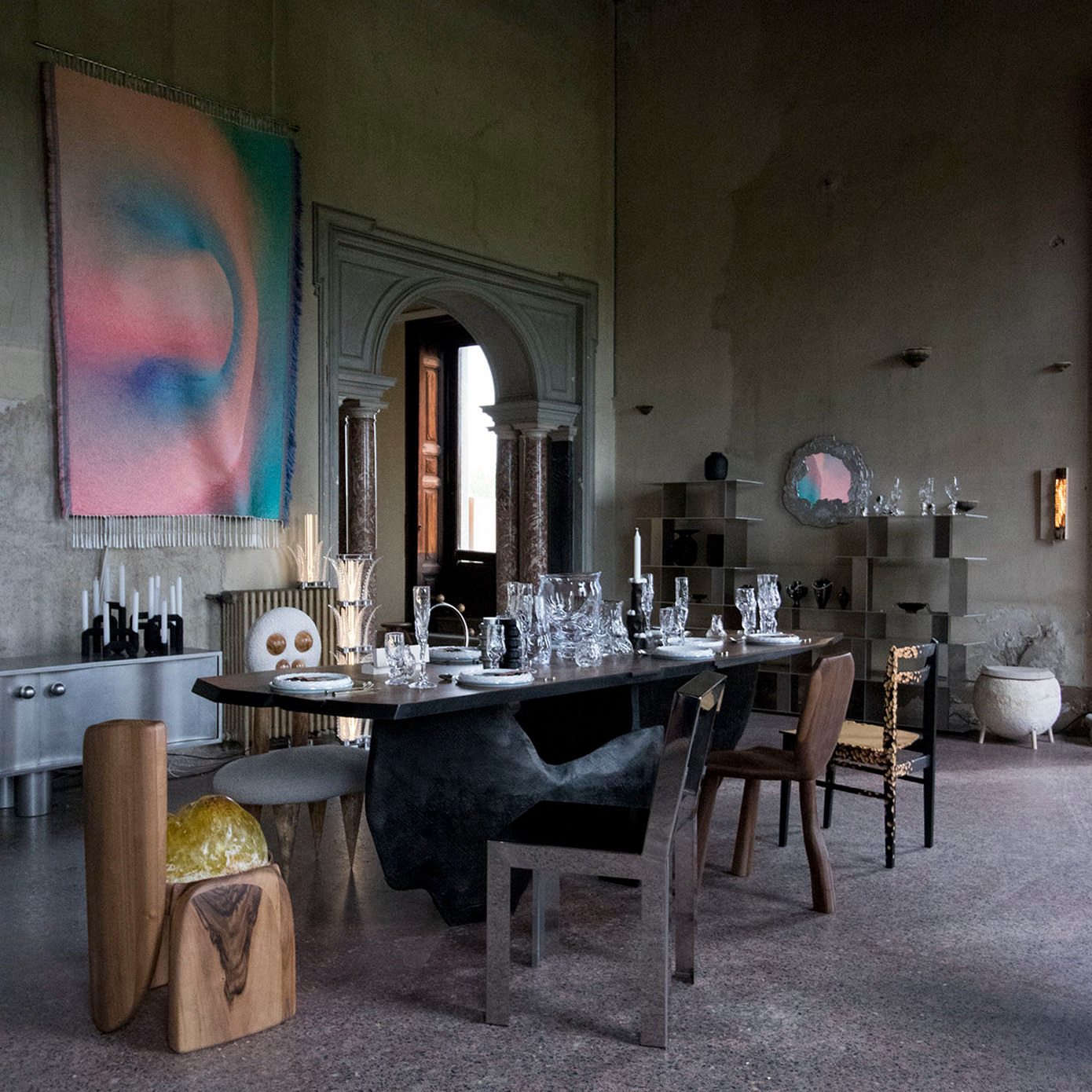
Strands of hair appeased with ribbons, the shock of bare arms held by caps of cream, skirts floating beneath a high, full bust like a bed curtain: this is what the French called dressing à la grecque, but most people today know the silhouette as “empire.” This style, which cuts the wearer’s waist just below the breast, was initially conceived to evoke the virtuously free-flowing robes of Ancient Greece—a nod to an era defined by public engagement and democracy. It is no coincidence that it emerged, following the French Revolution, as the aesthetic antithesis to the baroque panniers and other absurdly voluminous accessories that underlined the slain bourgeoisie's labor-exempt lifestyle. Defined by relative mobility and ease, empire-style dresses embraced a diaphanous sexuality, one that opened fashion's imagination to ambiguity and other romantic preoccupations of the era.
Three hundred years later and some fudging, the same political gestures appear in the work of All Is a Gentle Spring, an Australian fashion project focused on producing timeless albeit costume-y unisex staples such as corsets and unitards. One of their signature garments is a cropped empire dress, styled on their social media feed with bike shorts and jeans. It is a look that feels fit for a time traveler crashing through the thrush of history. “All Is a Gentle Spring collapses time in the same way my 6,000 Chrome tabs do,” says designer and founder Isabelle Hellyer. “There’s not a great deal of information that’s hard to find anymore; there are so many fairly specialized digital archives available to anyone who looks. I’m not interested in strict historical accuracy—I’m not a purist—so the project is free to jump through centuries in a sort of hodge-podge way.” As an example, Hellyer provides the brand’s logo, which is based on “the Glagolitic alphabet (from around the 9th century) and the pseudoscience of handwriting psychoanalysis (still around but most popular from the 17th-20th century)”.
The through line of the project is its exploration of sensuality’s various forms. Pieces to date are extremely body conscious, hugging and kissing their wearer all over. It was the “Pastoral Corset,” a toile girdle, that kicked things off. “Corsets really do something to our pleasure centers—they’re erotic,” Hellyer says. “Their appeal is fairly crude, really.”
Can our clothes turn us on, mechanically? There are certainly objects we assign flirtatious personalities. My mind jumps to the laundry machine jacking itself off in the basement; maybe it’s just waiting for company. Hellyer arrives at a more formal explanation: “There's something innately appealing in an hourglass shape, which is what the corset emphasizes. Corsets create this spilling-over, glass-totally-full cleavage. Nowadays, this is almost a shorthand for sexiness in costuming—think about how many come out for Halloween. But it's not a completely ancient idea of beauty. If we look back at something like the Venus of Willendorf, a Paleolithic sculpture, her proportions are totally the opposite. These things change with time.”

All Is a Gentle Spring often finds itself attracted to moments in fashion where sexiness is realigned and reshaped by technology. In their latest capsule, the designers challenged themselves to create erotic garments using upcycled domestic fabrics which are practically devoid of any give to stretch. They found themselves returning to the bombastic lines of the 1950s and ’60s, when bathing costumes had to rely on fit and shape because Spandex and Lycra hadn’t yet caught on. “When I think of sexy clothes, I usually think of second-skin stretchwear, but I wanted to try and hug the body with cotton and linen instead,” Hellyer explains, citing Italian actresses Gina Lolobrigida and Claudia Cardinale as references. Their next act runs in the opposite direction, taking up gymnastics and aerobics and leaning heavily on athletic fabrics to revisit historical configurations.
What I admire most about this approach to fashion is its game-like quality, as if the industry and all its references were some kind of multidimensional Rubik’s Cube into which a furious energy and logic is expended to set things right. And then, by the same mechanisms, this order is joyfully dismantled to make room for new pathways. It’s a hypnotizing drafting process but with a growing audience.
Next year, All Is a Gentle Spring will set up a studio in LA, their largest market, to deal with the demand. This move has been pushed back, due to COVID, but is ultimately the only way to expand while staying true to the closeness to the client for which the project has become known. “It’s easier for me to take the emotional temperature of the customer, because I’m closer to them,” Hellyer says. “Our most popular styles are made-to-order. You could say that's part of the appeal, that it creates a connection between the buyer and garment. In some sense that’s true, but it’s hardly a selling point. Really, made-to-order timelines can be a powerful deterrent in e-commerce—when you’re shopping online, you tend to want things quickly. That our customers are willing to wait is a sign the garment really connects.” We are all for more foreplay and less waste.



